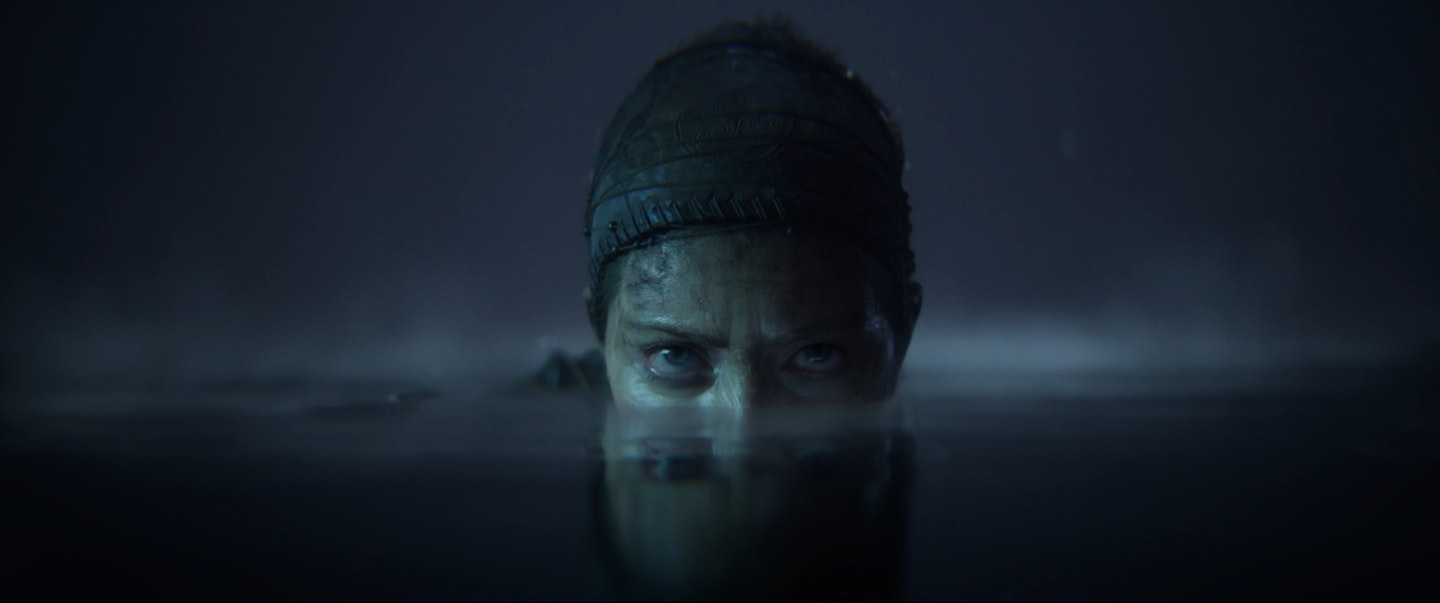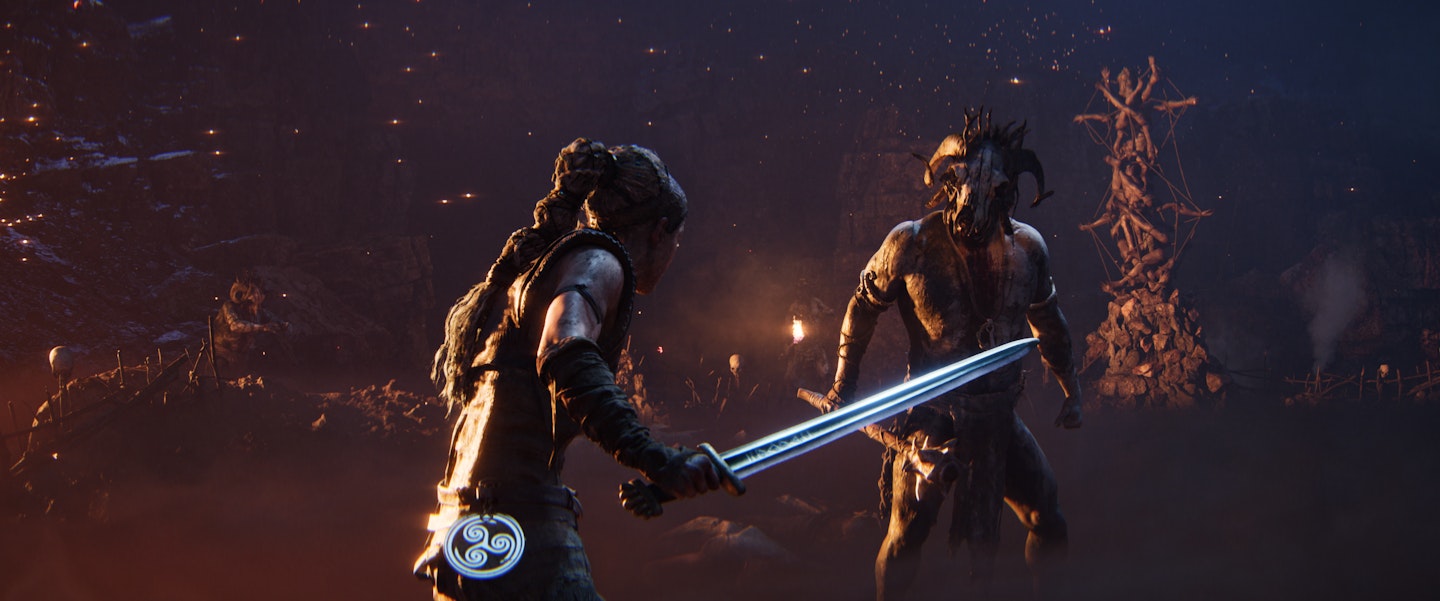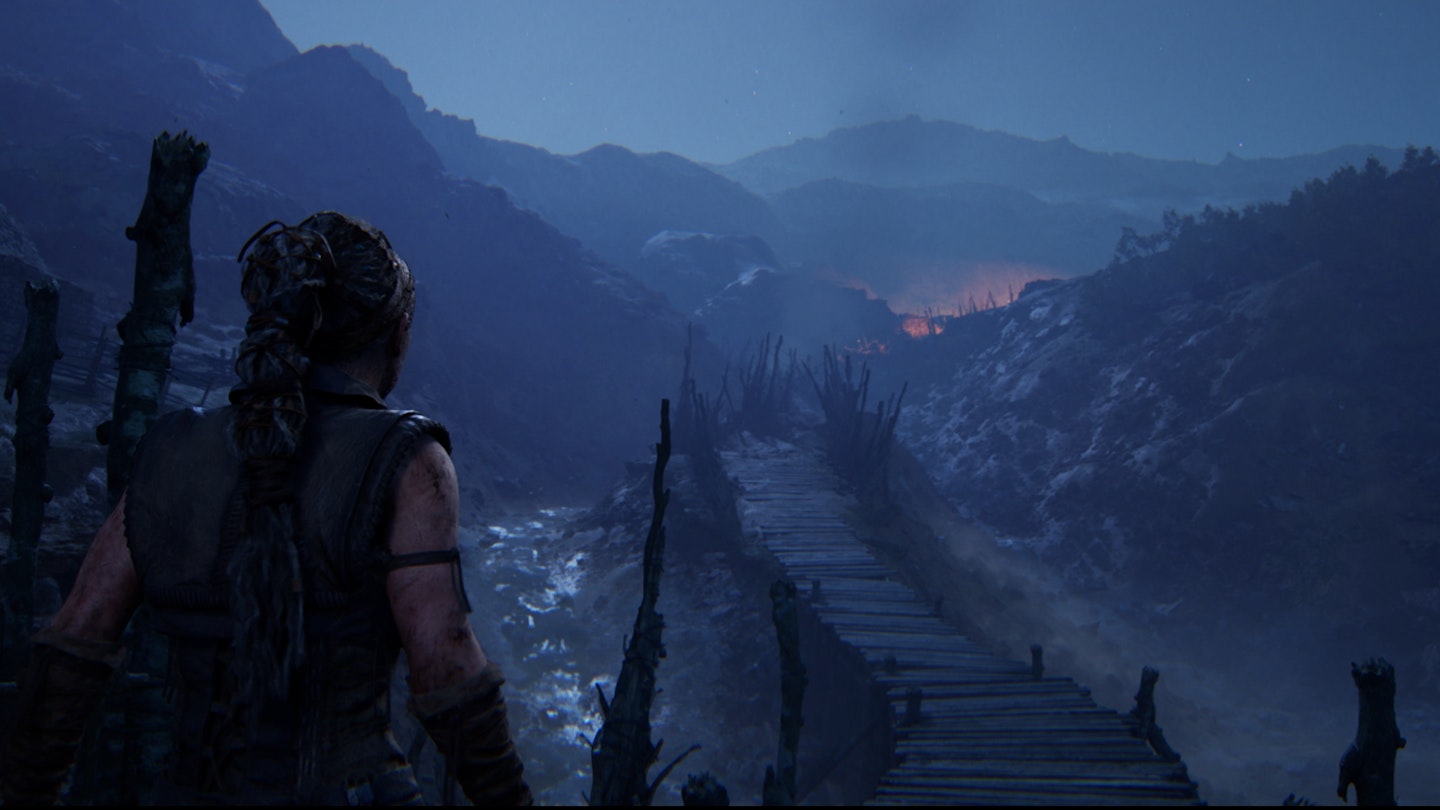Platforms: Xbox Series X|S, PC
Have you ever watched the sun set, with golden rays of light beaming over the horizon in just the right way to give everything a liminal, almost otherworldly quality? Sure, you could coldly explain it away as the mere refraction of the sun's rays through Earth's atmosphere, but that takes away from the magic of it all.
What's that got to do with Senua's Saga: Hellblade II? Well, beyond such mesmerising moments being a regular sight in developer Ninja Theory's spectacularly beautiful follow-up to 2017's Hellblade: Senua's Sacrifice, they're a metaphor for its protagonist's improved psychological state. The original was lauded for its exploration of mental health, specifically psychosis, as experienced by Senua, a Pict woman in the 9th century. However, plagued by visions and ever-present voices only she could hear, tortured by her father, and heartbroken by the murder of her lover, Senua's first outing could border on the traumatic in depicting how she fought her demons — a battle reflected in the dark world she inhabited.

Having come through all that, though, and achieved some degree of internal balance and acceptance in the process, Senua's continuing journey – pursuing slave-trading Northmen to Iceland in an attempt to rescue her remaining tribes-folk – is able to offer up moments of quiet beauty that feel, by contrast, cathartic — magic almost. It's reflected even in the name; a saga about Senua, no longer her sacrifice. And, while never exactly meek, this Senua is even more of a warrior, proactively seeking to help rather than being almost swept along by events.
Yet Ninja Theory hasn't just hand-waved away Senua's mental health with a magical "she's cured!" She's still a woman tormented by hallucinations that she doesn't have the language to even describe, let alone understand. It's a tricky line, and even the slightest misstep might have felt exploitative, but sharp writing and a phenomenal performance from Melina Juergens as Senua (both motion capture and vocal) instead provide a continuation that feels sincere and compassionate.
Senua's unique perception of the world around her is cleverly woven into both the narrative and the mechanics of Hellblade II. Like the first game, Norse myth plays a large part, but the Icelandic setting allows for local lore too, such as the Hidden People, who challenge Senua to navigate mirrored, upside-down realities only she can see in order to prove her worth. Elsewhere, Senua's penchant for recognising runes in nature is key to opening barriers – experienced as mystical in nature but, with her inability to proceed until she sees the right sign, arguably a metaphorical example of conditions such as OCD. In practice, these are all relatively simple perspective puzzles challenging the player to line up objects in the environment, but in working on multiple levels they add a nice bit of depth to Senua's world.
A game that begs to be played with a decent set of headphones on to really immerse yourself in Senua's world
Similarly, her psychosis factors into how she interacts with people she meets. While most of her interactions in the first game were with gods and spirits, her own trauma given form, here she has actual companions. Some are reluctant, such as Thórgestr (Chris O'Reilly), one of the slavers who took her village, others eye Senua as a saviour and seer, like Fargrímr (Gudmundur Thorvaldsson), a settler who may experience his own visions. All are greeted, judged even, by Senua's inner voices, a swirling jabber of observations, emotional outbursts, and fears as she meets actual people – something still strange and new to her, but that her growing confidence helps her manage.
As with 2017's original, Senua's Saga excels on the audio front, with a brilliant use of directionality. The voices Senua hears seem to swirl around, sometimes helping, others hindering, as disorienting at times for the player as they must be for Senua. Meanwhile, whispers from the Hidden Folk may ripple on the wind or echo through caves, while a tormenting Shadow – the vestiges of Senua's old doubts – continues to plague her at her lowest points. It makes for a game that begs to be played with a decent set of headphones on to really immerse yourself in Senua's world, rather than through tinny TV speakers or even surround sound.

Yet if Senua's social skills have improved here, it's at the expense of her combat ones. Hellblade II's scripted battles, each encounter taking place at a specific point, are stripped back from those in the original. A basic two-button melee system, offering light and heavy attacks, is bolstered only by the ability to evade or parry enemy strikes and, once a certain item is acquired early on, briefly freeze foes to turn the tide. Although each enemy is excellently realised and painstakingly animated, allowing players to read attack patterns and time their counters or dodges, the lack of any real variety in how they're fought can make encounters feel a touch repetitive. Still, fights are satisfyingly weighty, with real barbarian brutality to every blow struck or received, and Juergens' committed performance never fails to sell Senua as a relentless fighter.
However, in being so cinematic, and having every beat – whether combat, exploration, or puzzle-solving sections – so specifically crafted and packaged up for the player, Senua's Saga is also inherently linear, sometimes frustratingly so. One of the few concessions to more typical "gaming" structures is a series of hidden collectibles to hunt down – Lorestangir, totemic poles that each tell chapters of a lengthy fable, and Hidden Faces, pareidolic monoliths baked into the earth, behind which lurk secrets. Yet the stringent linearity results in no real ability to backtrack, often even within your current area where a humble drop ledge will prove too high to climb back up – and meaning that if you miss one of these pick-ups, you'll have to revisit the entire chapter to hunt them down.
Yet it’s here that the game's brevity – eight to ten hours, generously – is a positive. Senua's journey is best experienced first without too much focus on those distractions, and short enough that playing through a second time straight after to mop up collectibles doesn't feel like a completionist chore. Indeed, a second pass may shed more light on this nuanced, dreamlike tale, allowing fresh perspectives of your own to take shape. Possessed of staggering beauty and incredible soundscapes, Senua's Saga is absorbing like little else so far this year.
